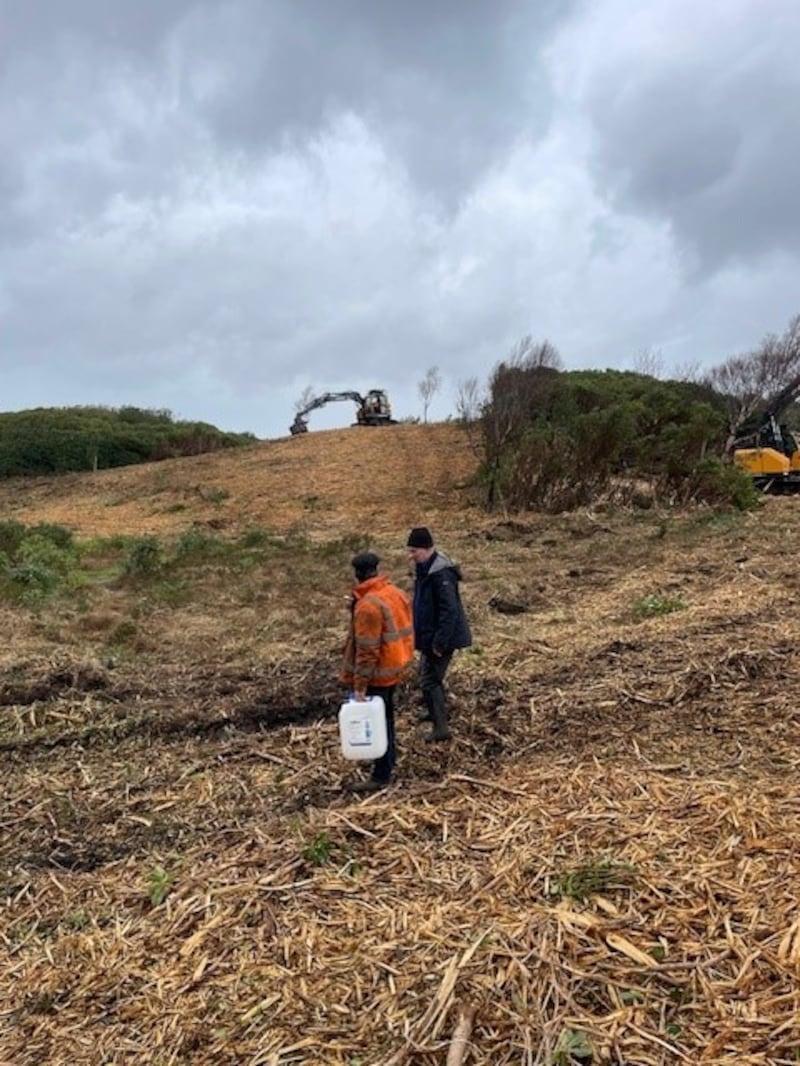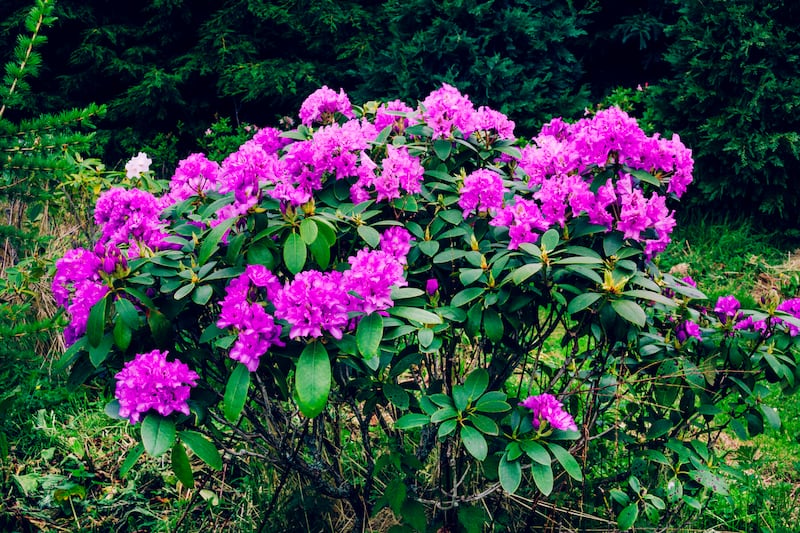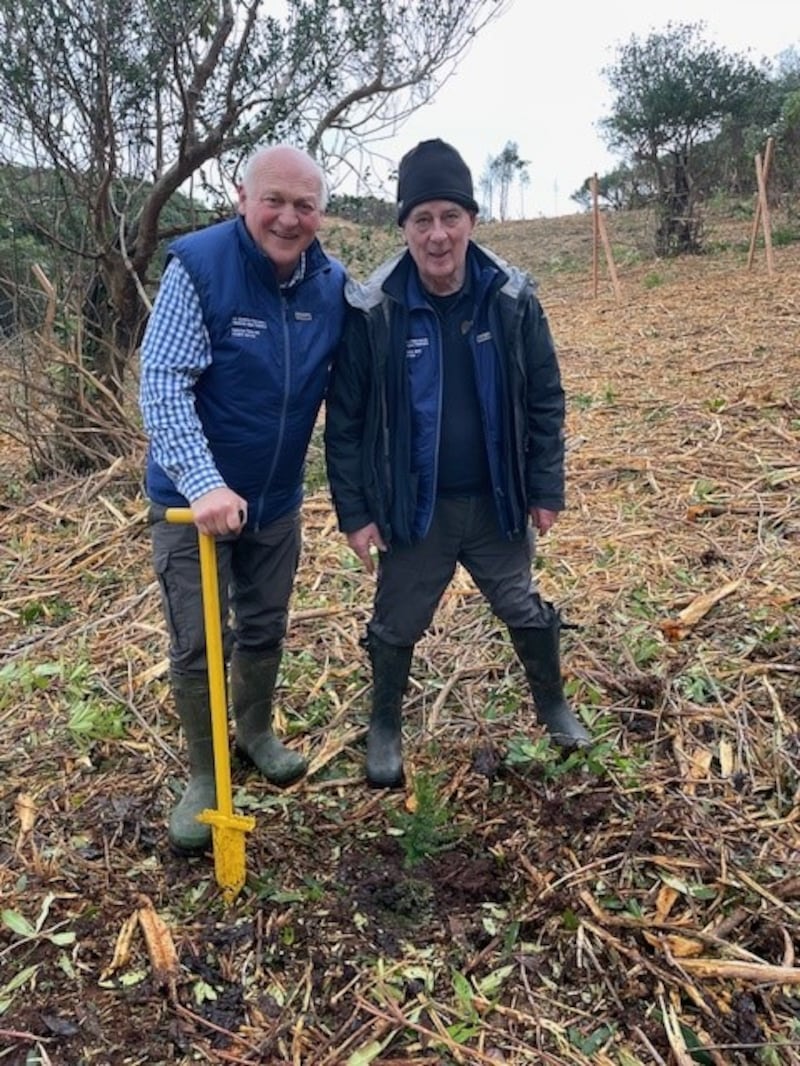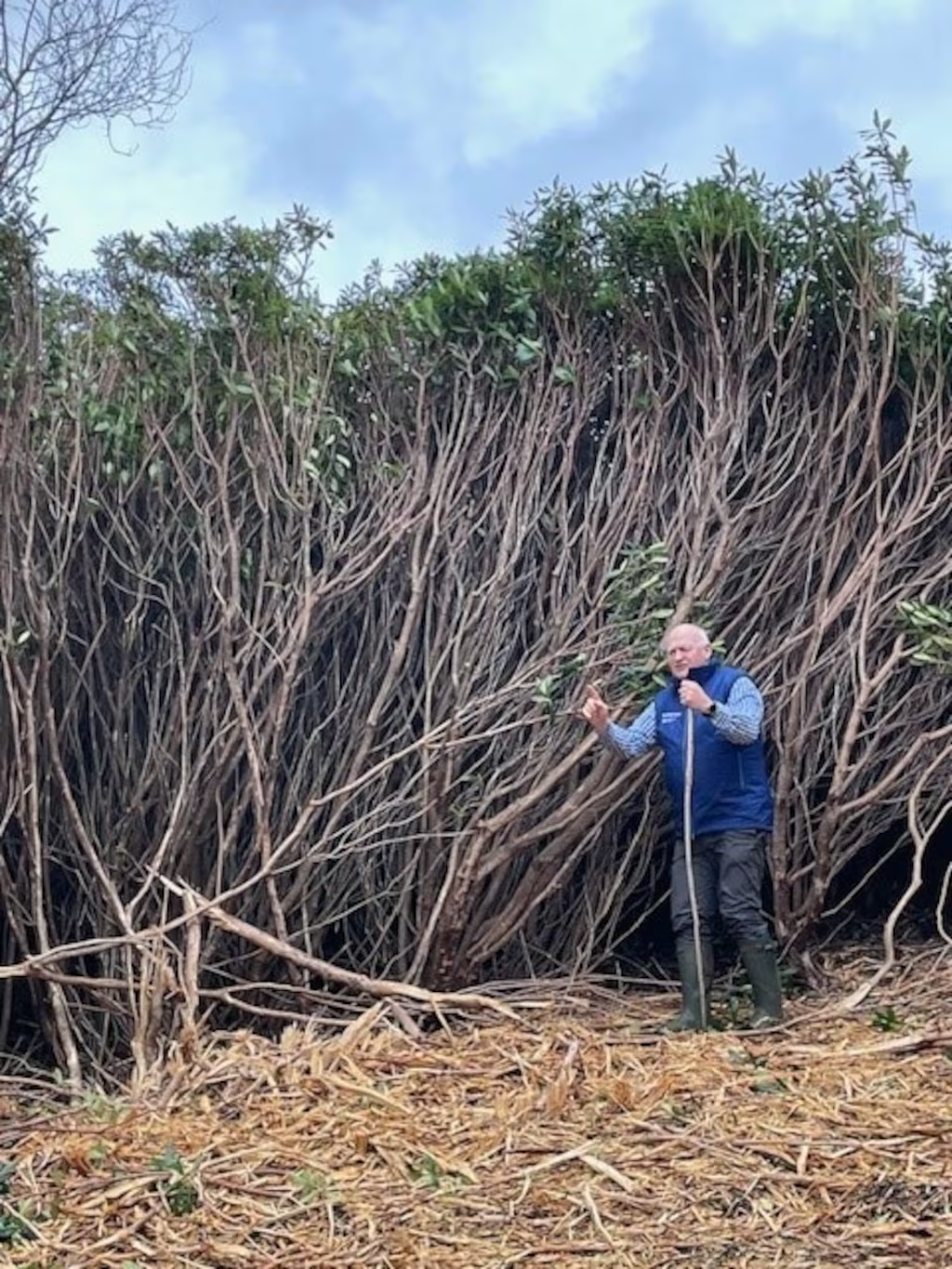There have been times when the battle against rhododendron in Killarney National Park seemed lost.
Eight years ago Michael Healy-Rae TD – now Minister of State with responsibility for agriculture – called in the Dáil for the Army to be brought in to tackle the infestation which had taken over a third of the then 25,000-acre park.
This was after two people had to be rescued in the jungle-like conditions from the western woods.
Hundreds of thousands of euro are spent on public contracts each year cutting back Rhododendron ponticum in the country’s oldest and most species-rich national park.
RM Block
For at least 40 years volunteers and activists, initially from the Groundwork Trust to most recently Men’s Sheds and a local Meitheal group, have been deployed in the Unesco biosphere reserve to try halt the plant’s spread while ecologists expressed despair at the impact its proliferation – and persistent return in cleared areas – was having on other plant life.
Author and conservationist Pádraic Fogarty has labelled rhododendron “a scourge” threatening not just yew and oak but the whole biosphere status of the park. Fogarty and rewilder Eoghan Daltun have hit out at the spread, saying the ancient oak woods are dying due to overgrazing and rhododendron combined.

But there is now a change in approach, and for perhaps the first time there is a sense of success.
About half a million euro has been invested in machinery by the National Parks and Wildlife Service (NPWS) to help clear the invasive species, which in summer bear pretty purples flowers which belie the damage they cause.
On the foothills of the Reeks at Tomies Mountain high over Lough Léin, two track machines with specially designed serrated teeth and operated by park staff flail then mulch hundreds of acres of dense impenetrable jungle caused by the rhododendron which grows to a height of several feet. What remains then is a carpet of rhododendron wood, almost like a cornfield stubble.
The initiative is new and “a game changer”, says Eamonn Meskell, NPWS divisional manager for Killarney National Park.
When the ground is cleared by the machines, rhododendron roots are treated with herbicide glyphosate; replanting of the area takes place and it is then left to rewild. Deer and sheep are excluded by wooden posts cut from fallen trees gathered in the park.
“We have broken the barrier,” says Meskell.
In the last two weeks alone more than 20 acres have been cleared - about two acres a day.


The buzz is in finding a holly or even an oak and releasing it, one of the machine operators remarked.
The rhododendron has been surrounding and choking native birch and holly, among other shrubs.
Given its diverse habitats, the park has many unique species. The mossy yew woods of Muckross are the last significant stand in Europe; orchids and rare ferns are still being discovered and the Killarney fern driven to near extinction by Victorians may still be found. The aim is to ensure they have again the space to survive and thrive.
Since 2021 the park has been divided by the NPWS into 72 zones, linked to geographic satellite information systems. Rhododendron bushes are logged and kept under surveillance so they can be monitored for spread. The methodology has potential for use in controlling other invasive species too such as the fringed water lily in the park, says Danny O’Keeffe, NPWS regional manager.
Artificial intelligence is also likely to be harnessed to assess infestation levels from satellite imagery, he says.
“The scientific approach allows us to strategise without the subjectivity of individuals. People are important but when you have data you can make decisions a lot easier,” O’Keeffe says.
There is no doubt climate change has been a factor in helping the advance of the rhododendron species, creating even warmer and more moist conditions loved by the plant.
The introduction of Sika deer as well as rhododendron many years ago disrupted the ecology of the park, says conservation ranger Padruig O’Sullivan. These deer – along with native red deer – graze the forest floor. They eat the acorns dropped from the oak, the young holly bushes, the heather on Mangerton. The overgrazed landscape makes it easier for rhododendron to colonise. And in turn the sika shelter in the rhododendron.

What is lost are oak woods, regenerating yew, aspen, holly and corridors hosting insects or bats.
Along with clearing rhododendron, culling of deer in the park has also stepped up a gear this year. Hundreds of deer – red and sika – are being shot by conservation rangers – with a landmark 500 taken out this year.
The park has an abattoir where the deer are then brought. Much of the venison ends up in high-end restaurants or is exported, O’Sullivan says.
[ Gearagh native forest: the case for making it Cork’s first national parkOpens in new window ]
Meanwhile in the cleared forest, regrowth is starting. Acorns are shooting up new oak trees while wild flowers such as foxgloves have also appeared. Waterfalls hidden for decades are emerging too.
The clearance has seen hundreds of acres opened up already. It will take some time before the work is complete.



















